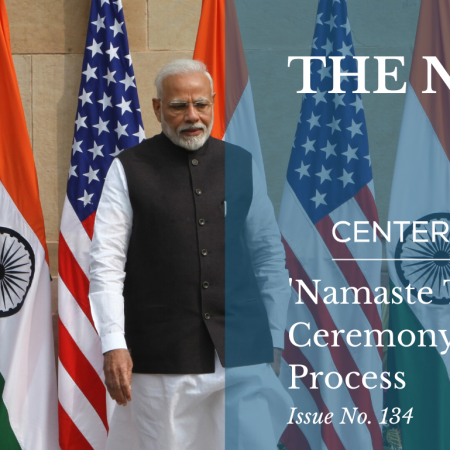Sixth Graders Need a New Textbook on Ancient World History
By Karin Friedemann, TMO
Due to social pressure, great strides have been made within the past 50 years to include women and non-whites in the picture of the past. However, American students still have an extremely warped view of world history and how it relates to current events because of the way Jews and Israel are discussed at school, and the way Arabs and Islam are excluded from mention, even when the topic is ancient Canaan.
I am deeply concerned about my daughter’s 6th grade social studies textbook, which I believe violates the law by teaching Bible history (Zionist mythology) instead of sticking to the facts when discussing ancient Canaan and Jewish history. I truly feel like David facing Goliath when bringing up these issues with the school administration.
The textbook I am concerned about is “History Alive! The Ancient World†by the Teachers’ Curriculum Institute. There are six units: Early Humans and the Rise of Civilization, which discusses Mesopotamia; Ancient Egypt and the Middle East, which includes two chapters on Judaism; Ancient India, which introduces Hinduism and Buddhism; Ancient China, which discusses Confusionism, Daoism and Legalism; Ancient Greece, which discusses Democracy and Greek contribution to the modern world; and Rome, which discusses Christianity and Rome’s legacy in the modern world.
The chapters present artifacts, archaeological evidence, cultural traditions and photos of these regions in modern day. They piece together a scientific understanding of history based on what we know – all except those relating to Canaan! There is no excuse for this omission of facts and evidence from the Middle East Section, because Canaan is full of artifacts, ancient ruins, and traditional culture.
“The narrative doesn’t recognize the importance of the actual geo-political history of the region as part of the indigenous timeline from Syrian Phoenician Nabatean Arabian ‘Judaism’ to ‘Christianity’ and then to ‘Islam’ all as part of one continuous history,†notes Oxford scholar Lilia Patterson.
Instead of a rich discussion on history, the chapters on Canaan contain only Bible stories told from a radically Judeo-centric perspective. For example, Abraham is mentioned as the father of Judaism but the textbook neglects to mention he had two sons, Isaac and Ishmael. That is why Muslims refer to Jews as their “cousins.†It would have been so easy to add a statement saying that Arabian historical legends also date back to Abraham, but this topic is carefully avoided to the point of absurdity.
Many different people lived in ancient Canaan besides Israelites. Over time, these many tribes intermarried with each other. Canaanite scholar Mazin Qumsiyeh explains, “The Palestinians of today, Muslims and Christians, trace their descent to all the peoples who have lived on this land from the time of the Canaanites.â€
The exclusion of Arabic history from the section on the Middle East creates a textbook that is not only biased but wildly inaccurate. The history of Canaan needs to be told in a secular, scientific way based on archaeological, cultural and linguistic evidence, just like all other histories are taught. Bible stories are not supposed to be taught as historical fact. Many paragraphs start with “The Hebrew Bible says…†(then proceed to misrepresent what the Bible says), while several actually present legend as fact.
The Jewish connection to the Middle East is presented as a continuum dating back to the ancient times, ending with their expulsion by the Romans in the first century after Christ, even though historical evidence finds no proof of any major migrations. Instead, what has been found is that most of the descendants of the ancient Israelites accepted Christianity and eventually embraced Islam.
“Archeologists at Tel Aviv University showed that city states and kingdoms were routinely made and obliterated in the ancient land of Canaan while the natives survived and continued to live.†The various Canaanite groups “lived, fought, interacted and collaborated, but no group was obliterated in history,†writes Qumsiyeh.
Established by the Jebusites (not by King David) in 3000 BC, Jerusalem has always been an international city with a multi-ethnic and multi-religious community. After King Solomon’s death, the majority of the Israelites no longer considered Jerusalem their capital. Yet, the textbook refers only to Jerusalem as the Jewish capital of Israel.
The textbook’s discussion of the Temple of Solomon and its importance to Jews is also completely inadequate because again, it relies exclusively on Biblical mythology and omits extremely important facts about the Arab history of the region.
After the Romans expelled the Jews in the 1st century CE, they also destroyed the Temple of Solomon. All that was left was a small remnant of a wall. It could barely be seen as the area was used as a garbage dump.
The first goal of the first Muslim generation after the death of the Prophet Mohammed in the 7th century CE was to liberate Jerusalem and rebuild the Temple. Islamic Caliph Umar lifted the ban on Jews living in Jerusalem for the first time since 70 CE. The new Muslim government and the Jewish community worked together to clean up the garbage and build a new house of worship on the Temple Mount, incorporating the Wailing Wall, which Jews hold sacred. Karen Armstrong writes:
“As soon as the platform had been cleared, Umar summoned Ka’b ibn Ahbar, a Jewish convert to Islam and an expert on the isra’iliyat or as we would say, “Jewish studies.†It came naturally to the Muslims to consult the Jews about the disposition of the site that had been scared to their ancestors. Both the Jewish and Muslim sources make it clear that Jews took part in the reclamation of the Mount.â€
When European Crusaders took over Jerusalem, both Muslims and Jews were persecuted and banished from the city. When Saladin reconquered the city in the late 12th century, Jews and Muslims were invited back into the holy city. Jerusalem became known as the “City of Peace†where Muslims, Christians and Jews could worship freely.
These are important details to omit. Instead of facts, the textbook dishonestly presents the history of modern-day Israel as the “return†of exiled Jews to their “homeland.†It is simply wrong to teach two chapters on Judaism, one chapter on every other religion, but not one sentence mentioning the Abrahamic origins of Islam. When I complained, I was told that this is because Islam is not an ancient religion.
However, all of the other chapters attempt to create a picture of the modern day that relates to the past. Even the chapter on Mesopotamia includes a photo of modern day Iraq. The textbook includes photos of a synagogue in Czechoslovakia, and many other scenes of European Jewish life which, while interesting, have no historical connection to ancient Canaan whatsoever. Since this Ancient World textbook devotes an entire chapter to Jews in modern times, it makes no sense not to mention once that in modern day Mesopotamia, Syria, Canaan, and Egypt, most people are Muslim or Christian and they speak Arabic.
Our exposure to information at a young age sets the tone for all future understanding. This textbook reflects an outdated, Bible mythology-based world view that is racist, historically inaccurate and absolutely inappropriate for use in a public school.
15-4













2013
941 views
views
0
comments